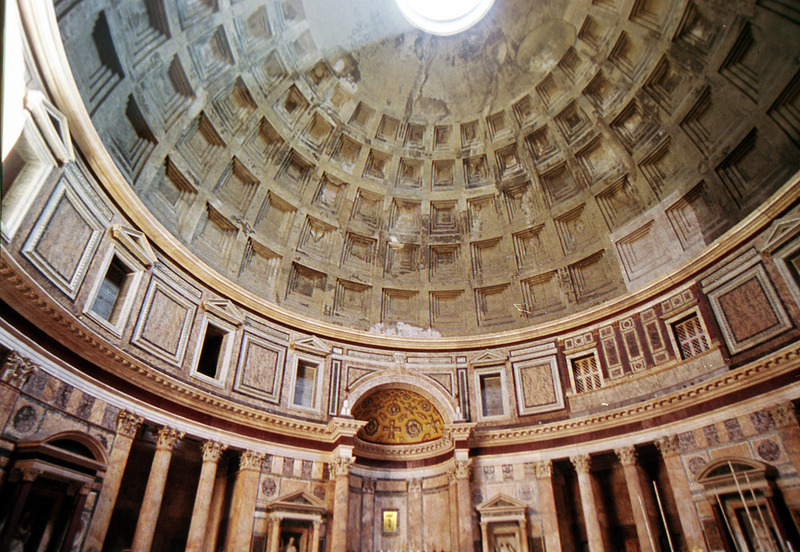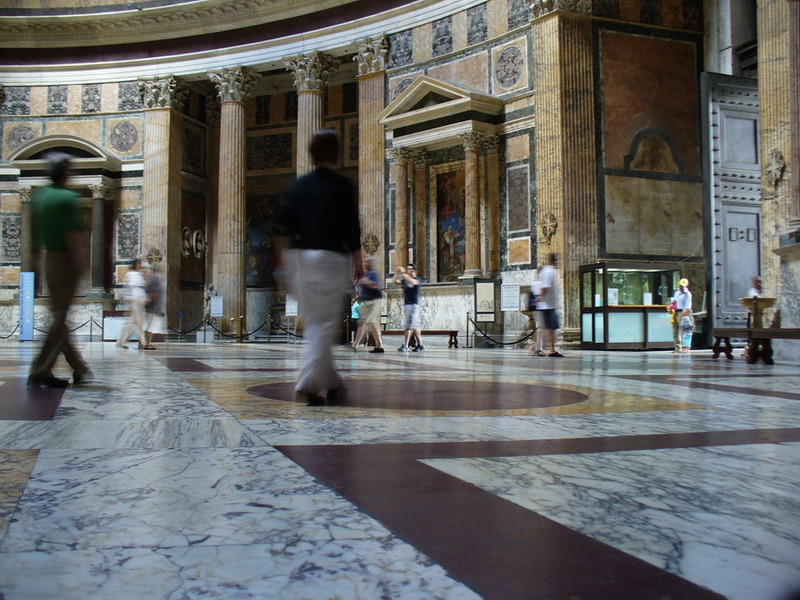Interior

A view of the Rotunda and oculus. The view provides a sense of the coffering on the ceiling, decreasing in size.
Cupola
The interior of the concrete cupola is decorated with 5 rows of 28 coffers that culminate at the oculus.1 As the coffers progress upwards, they decrease in size, exaggerating the height of the ceiling that visuallly towers into the distance. Though the cupola is currently covered in grey-toned plaster, the ceiling would have been much different in antiquity. Historians speculate that the ceiling was originally colored in dark blue with bronze accents on the coffers.2 During the day, the sunlight would showcase the rotunda’s decorative grandeur; at night, the cupola would become an awe-inspiring metaphor for the night sky. The oculus would allow the moonlight to illuminate the Rotunda and onto the bronze accents — the reflected light would have glittered like stars against the sapphire ceiling.
Click to see a virtual reconstruction of the Pantheon created by IDIA Lab at Ball State University.

The walls of the Rotunda and the floor, showing the interplay between the various colored marbles that decorate the area.
Rotunda
After passing through the portico and the huge bronze doors, you enter into the Rotunda. Rich colors swirl around the massive space: Phyrgian purple, Numidian yellow, grey granite, and red porphyry create the walls, pavement, and decorative features of the Pantheon’s interior.3 Unlike the columns on the monument’s porch, the Corinthian columns that line the Rotunda's perimeter are fluted, thus providing the area with an elaborate visual appeal. The ground pavement continues the theme with squares and roundels of colored marble that activate the environment.
The walls of the structure accommodate seven alcoves (recesses) that span across the entire perimeter. These spaces would have been areas to place sculptures and other works of art in antiquity, but have since been converted into chapels and tombs.4 Over its lengthy history, the Pantheon has been the final resting place for many prominent individuals. Its alcoves held Raphael and his fiancée, Arcangelo Corelli, and several Italian kings and queens.
1 Licht, Kjeld De Fine, The Rotunda in Rome: A Study of Hadrian's Pantheon, (Copenhagen: Gyldendal, 1968), 140.
2 Ibid., 145.
3 Claridge, Rome, 231.
4 Ibid., 230.